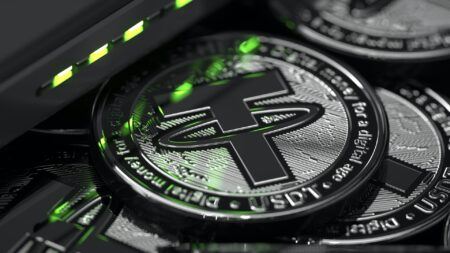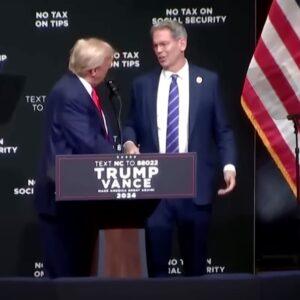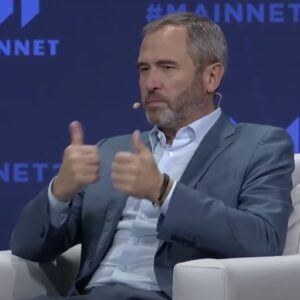This article will hopefully answer any questions you may have about the EOS blockchain upgrade (i.e. mainnet launch) and token migration.
What Is Token Registration All About?
Let’s say you have some EOS tokens already. You may have got them through the ICO token distribution, bought them on a centralized exchange, or obtained them as part of a token swap on a decentralized exchange. However, it doesn’t really matter how you got them; the point is that these EOS tokens are sitting in some kind of wallet.
According to the EOS.IO FAQ, “EOS tokens are ERC-20 compatible tokens distributed on the Ethereum blockchain pursuant to a related ERC-20 smart contract.”
Translation: Any EOS tokens you have now exist not on a native EOS blockchain, but on the Ethereum blockchain. This explains why your Ethereum and EOS receiving addresses are currently identical.
Furthermore, “EOS Tokens will become fixed (non-transferable) on the Ethereum blockchain within 23 hours after the end of the final EOS Token distribution period which will occur on June 1, 2018 at 22:59:59 UTC. At this point the EOS Token distribution process will be complete and any person who wishes to launch an EOS Platform adopting the EOS.IO Software will be able to generate a JSON file mapping EOS public keys to the fixed balances of the EOS Tokens from the state of the Ethereum blockchain.”
Translation: If the EOS tokens you have now in your Ethereum wallet have not been registered by the deadline date (1 June 2018 22:59:59 UTC/GMT), then your EOS tokens will not be part of the snapshot that will be taken shortly after this deadline. And if your EOS tokens are not in this snapshot, they may as well not exist. Why? Because after block.one releases EOS.IO 1.0 on 2 June 2018, any entity that decides to launch an EOS platform that adopts the EOS.IO software will be looking at this snapshot to decide who should receive via “airdrops” its own variant of EOS “coins.”
Although, theoretically, on 2 June 2018 or shortly thereafter, we may get multiple EOS blockchains, the more likely scenario is that the EOS community will choose one blockchain as the winner and that there will be just one main EOS blockchain, which will become known as “EOS Mainnet.”
Earlier we mentioned that it was essential that you register EOS tokens prior to the deadline. However, it would be more correct to say that what needs to be registered are not the individual EOS tokens you hold but the Ethereum mainnet address where your EOS tokens are. And what will happen once the EOS mainnet launches is that one EOS mainnet coin will be credited to your EOS mainnet address for every EOS token you hold at your Ethereum mainnet address.
Or to put it another way, EOS token registration is the process by which your Ethereum mainnet address, which is the public key of your Ethereum wallet, is associated with the public key of your (native) EOS wallet.
When the EOS mainnet is launched, it will go through the Ethereum blockchain looking for the Ethereum addresses that are registered and for each such Ethereum address, credit the appropriate number of EOS coins (with EOS coins distributed on a 1:1 to the EOS tokens at a registered Ethereum address) to the linked EOS address on the EOS blockchain.
Once the EOS snapshot is taken, all (ERC-20) EOS tokens will be frozen on the Ethereum blockchain and you will no longer be able to send or exchange them.
How Do I Register My EOS Tokens
Strictly speaking, if your EOS tokens are currently held at a crypto exchange that has promised to support the EOS blockchain upgrade and token swap/migration, you do not need to do anything to receive your EOS coins once the EOS mainnet launches. As of press time, here are some of the exchanges that have promised to handle the token swap for their users:
- Bibox
- Binance
- Bitfinex
- Bithumb
- Kraken
- Kucoin
- Zebpay
And if your EOS tokens are held by some other exchange, please contact them as soon as possible and find out if/how they plan to take care of the token swap.
Now, although it is undoubtedly much easier to let an exchange handle the token registration for you, there are two potential problems:
- In the event of multiple EOS blockchain launches, you can’t be sure which one your exchange will be supporting, and it is very unlikely that any exchange will support all of them.
- It is possible (and perhaps highly probable) that exchanges will not support airdrops (for ERC-20 tokens belonging to DApps to be released on the EOS network in future) that use the snapshot.
If you decide to do the token registration yourself, you will need to withdraw your EOS tokens from the exchange and send it to one of these three Ethereum wallets: MetaMask (web-based); MyEtherWallet (web-based); Exodus (desktop wallet that is available for Linux, Mac, and Windows).
For MyEtherWallet, the “TruthBlitz Media” YouTube channel has a nice video guide. But if you prefer a written guide, the one by Sean Mitchell (who works at block.one) is very good.
For Exodus, you can use either the excellent written guide provided on the Exodus website.
However, if you prefer a video guide, the YouTube channel “OINCADO” has an easy-to-follow video guide that shows how to do the token registration using either MetaMask or Exodus.
Other Useful Resources
To learn more about EOS in general and its blockchain upgrade in particular, you may find some of the resources below useful:
- The official EOS FAQ (provided by block.one, the company developing the EOS.IO software)
- “The Exhaustive EOS FAQ” on the EOS Subredit
- “EOS.IO Technical White Paper” (provided by block.one, the company developing the EOS.IO software)
- EOS.IO Software Release Countdown Timer ((here, you can also find out if the EOS token you have in an Ethereum wallet have been registered)
- Medium blog post by the Exodus team on the importance of registering your EOS tokens right now
- EOS Authority's Genesis Campaign page (lots of useful information about EOS token registration and why it is so important)








